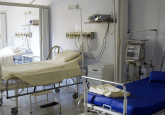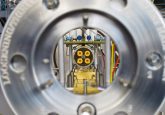An author’s perspective: Vellalore Kakkanaiah on flow cytometry in cell-based pharmacokinetics

To help provide insight into the recent article published in Bioanalysis: Flow cytometry in cell-based pharmacokinetics or cellular kinetics in adoptive cell therapy, we spoke with author Vellalore Kakkanaiah, Associate Director at Pharmaceutical Product Development (PPD; NC, USA). Vellalore explains why he felt this was an important area for bioanalysis and worthy of publication. With 10 years of experience in bioanalysis, Vellalore has focused his research on flow cytometry.
“After completion of my doctorate in immunology from Madurai Kamaraj University (Tamil Nadu, India), I moved to the US for my post-doctoral training. As a Fellow of the Arthritis Foundation (GA, USA), my post-doctoral research was focused on murine models of autoimmunity and most of my research involved immunophenotyping by flow cytometry. My first job was in a reference laboratory as a research scientist, where I developed diagnostic assays to measure cellular immune responses. Following this position, I moved to a biomarker discovery laboratory where I developed cytometry assays using a microvolume scanning cytometer. Currently at Pharmaceutical Product Development (PPD; NC, USA), I have established a flow cytometry laboratory as a part of the biomarker laboratories.”
1. What inspired you to work in this field of bioanalysis?
When I came to the US for post-doctoral training, the flow cytometer was the first instrument I was trained to use. Being a technical-minded person, I was fascinated by the cytometry platform. Fortunately, in my earlier career, I had a chance to work with engineers who were assembling microvolume scanning cytometers. Through this experience, I was thrilled to test those newly built instruments and enjoyed providing feedback to the engineers for improvements. Eventually, I established a flow cytometry laboratory for biomarker analysis in my current position and am excited to be a part of the bioanalysis team.
2. What impact would you like to see/expect to see as a result of your publication?
Flow cytometry assays are relatively new to the bioanalysis arena, especially for in vivo PK monitoring. Currently, flow cytometry assays are validated as ‘fit-for-purpose’ validations, and since there is no established guidance for these types of analyses, I would like to see the method validation guidance from regulatory agencies. As I discussed in the publication, flow cytometry is different from conventional bioanalytical technologies such as LBA and LC–MS; therefore, it is critical for all the players involved in the validation of methods to establish guidelines.
3. What are the next steps for your research and this field of bioanalysis?
We are interested in developing assays for measuring cellular immune responses. Recent approval of viral vector-based gene therapies has introduced new challenges to the bioanalytical laboratories. In addition to evaluating neutralizing antibodies (Nab) and anti-drug antibodies (ADA) for immunogenicity, the cellular immune responses to the transgene also need to be considered in gene therapy studies. The cellular immune responses are measured by ELISpot and/or by flow cytometry assays where the various T-cell cytokines (IFN- γ, IL-2, etc.) produced by the cytokine secreting cells are quantified. Again, due to lack of guidance, these two methods need to be validated as ’fit-for-purpose’ validations.
4. Are there any researchers/projects/technologies that you are watching at the moment, and any you think we should be keeping an eye on?
Mass cytometry, cytometry by time-of-flight (CyTOF), is the combination of mass spectrometry and flow cytometry and is an emerging platform to perform single-cell analysis of both cell surface and intracellular molecules. The detecting antibodies are labeled with rare metal isotopes rather than fluorophores in conventional cytometry which allows many more antibody combinations in a single analysis. Use of rare metal isotopes eliminates the spill over by the fluorophores, which surpasses the limit in the number of channels in cytometry. Current CyTOF has more than 100 detection channels, which enables the analysis of more than 40 protein makers per cell. However, the sensitivity and the number of cells analyzed per second are still lower than the conventional cytometry. In addition, clean sample preparation is also critical for mass cytometry.
5. Do you have any advice for anyone who may be interested in working in this field?
Due to various hurdles in developing automated data analysis for flow cytometry methods, mostly the analyses are done manually and are hypothesis-driven. Therefore, the experience of the scientist is critical for data analysis. Recent use of this technology in drug development for both pharmacodynamics and pharmacokinetics methods opens a lot of opportunities for scientists who desire to make a difference in the patient’s life.
Reference: Kakkanaiah VN, Lang KR, Bennett PK. Flow cytometry in cell-based pharmacokinetics or cellular kinetics in adoptive cell therapy. Bioanalysis. 10(18): 1457–1459 (2018)





